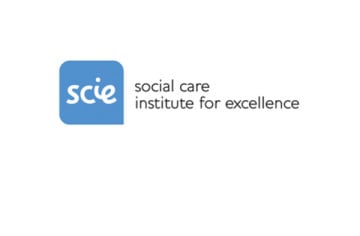Organisational Abuse
Also known as institutional abuse, this is where poor working practices and care leads to mistreatment and harm to adults at risk. It could be neglect and poor practice in an institution or a specific care setting such as a hospital or care home for example or relating to care in a person’s own home. It can range from one-off incidents to on-going ill-treatment; neglect might occur as a result of the structure, policies, processes and practice in an organisation.
It can be restrictive practices which are in place to meet the needs of staff, the service, or the organisation, rather than reflecting the individual needs of the people receiving the services.
Other examples might be poor quality or limited quantities of food given to adults using the service leading to malnourishment, and then to skin breakdown. It can be a lack of training for staff, or failure to maintain moving and handling equipment, or the environment. It could be community health staff failing to manage wound care because of missed visits as a result of staff shortages and poor prioritisation.
Organisational abuse often will affect more than one person in that environment or context. An example of this can be seen in the Norfolk Safeguarding Adult Review for Ms E (SAR - Ms E (published December 2018) » Norfolk Safeguarding Adults Board) where failures by a service provider led to significant harm to Ms E but also affected most of the other residents in some way.
It requires a strong multi-agency approach to manage it effectively, to ensure the structural issues and wide-ranging impacts are fully identified and addressed.
There are a range of quality / regulatory processes and checks in place that look to prevent organisational abuse, but it is not uncommon that different concerns are picked up by different people and agencies and not shared. Common themes in Safeguarding Adult Reviews which have considered cases of organisational abuse are lack of information sharing, poor communication and limited partnership working.
Professional curiosity is also strongly recommended to ensure that visitors to such settings don’t take things for granted and have confidence asking questions if they see something that is not quite right.
As a result of the SAR for Ms E, Norfolk has a much more robust system for monitoring services, gathering information, and responding to accumulating concerns. There are strong links particularly between Norfolk County Council (including the integrated quality service team and safeguarding adults team), Norfolk & Waveney Integrated Care Board (including Continuing Health Care and the ICB safeguarding team), the Care Quality Commission and Healthwatch.
What might it look like?
- Discouraging visits or the involvement of relatives or friends
- Run-down or overcrowded establishment
- Authoritarian management or rigid regimes
- Lack of leadership and supervision
- Insufficient staff or high turnover resulting in poor quality care
- Abusive and disrespectful attitudes towards people using the service
- Inappropriate use of restraints
- Lack of respect for dignity and privacy
- Failure to manage residents with abusive behaviour
- Not providing adequate food and drink, or assistance with eating
- Not offering choice or promoting independence
- Misuse of medication
- Failure to provide care with dentures, spectacles or hearing aids
- Not taking account of individuals’ cultural, religious or ethnic needs
- Failure to respond to abuse appropriately
- Interference with personal correspondence or communication
- Failure to respond to complaints
How might you recognise it?
- Little flexibility and choice for people using the service
- Too few staff to meet people’s needs
- People being hungry or thirsty
- Lack of personal clothing and possessions; communal use of personal items
- Lack of adequate procedures
- Poor record-keeping and missing documents
- Lack of training for staff, poor moving and handling practices
- Absence of visitors
- Few social, recreational and educational activities
- Public discussion of personal matters
- Unnecessary exposure during bathing or using the toilet
- Absence of individual care plans
- Lack of management overview and support
- High level of minor injuries
- Strong smell of urine
Care Quality Commission website
Guidance on Safeguarding in Care Homes
(National Institute of Clinical Excellence (NICE) 2021)



